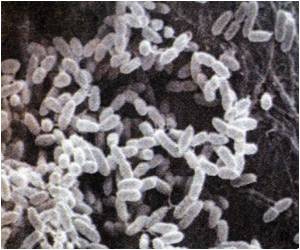- Bacteria living in household dust particles have been detected
- These are capable of transmitting antibiotic resistance genes to other pathogens
- This could lead to stubborn antibiotic-resistant infections that are difficult to treat
Bacteria living in house dust are capable of spreading antibiotic resistance genes to other pathogens, causing stubborn infections that are difficult to treat, finds a new study from Northwestern University, USA. Importantly, this is the very first study to identify bacteria thriving in household dust. The study, published in the journal PLOS Pathogens, was led by Dr. Erica M. Hartmann, PhD, who is an Assistant Professor of Civil and Environmental Engineering at the McCormick School of Engineering, Northwestern University, Evanston, Illinois, USA.
“This evidence, in and of itself, doesn’t mean that antibiotic resistance is getting worse,” says Hartmann. “It’s just one more risk factor. It’s one more thing that we need to be careful about.”
Read More..
How are Bacterial Antibiotic Resistance Genes Transmitted?
Bacterial antibiotic resistance genes can be transmitted by the following two ways:- Vertical Transmission: This occurs when the parent bacterium undergoes cell division and transmits the antibiotic resistance genes to its next-generation progeny
- Horizontal Transmission: This occurs when a bacterium produces a copy of the antibiotic resistance gene and transmits it to another bacterium within its vicinity
“We observed living bacteria have transferrable antibiotic resistance genes,” says Hartmann. “People thought this might be the case, but no one had actually shown that microbes in dust contain these transferrable genes.”
Why Do Bacteria Transmit Antibiotic-Resistance Genes?
The research team believes that the underlying reason why bacteria transmit their antibiotic resistance genes is due to exposure to excessive stress. The bacteria are unable to cope with the stressful conditions that are often present indoors, including the following:- Dry or cold environment
- Lack of food
- Exposure to antimicrobial sprays
Concluding Remarks
Hartmann concludes: “Microbes share genes when they get stressed out.” She adds: “Since they aren’t equipped to handle the stress, so they share genetic elements with a microbe that might be better equipped.”Recommendation
The research team recommends using a damp cloth for cleaning surfaces instead of using antimicrobial sprays, as the latter can increase the chances of emergence of antibiotic-resistant bacteria.References:
- Mobilizable Antibiotic Resistance Genes are Present in Dust Microbial Communities - (https://journals.plos.org/plospathogens/article?id=10.1371/journal.ppat.1008211)
- Stressed-out Dust is Sharing Antibiotic Resistance Genes - (https://news.northwestern.edu/stories/2020/01/stressed-out-dust-is-sharing-antibiotic-resistance-genes/)
Source-Medindia
















